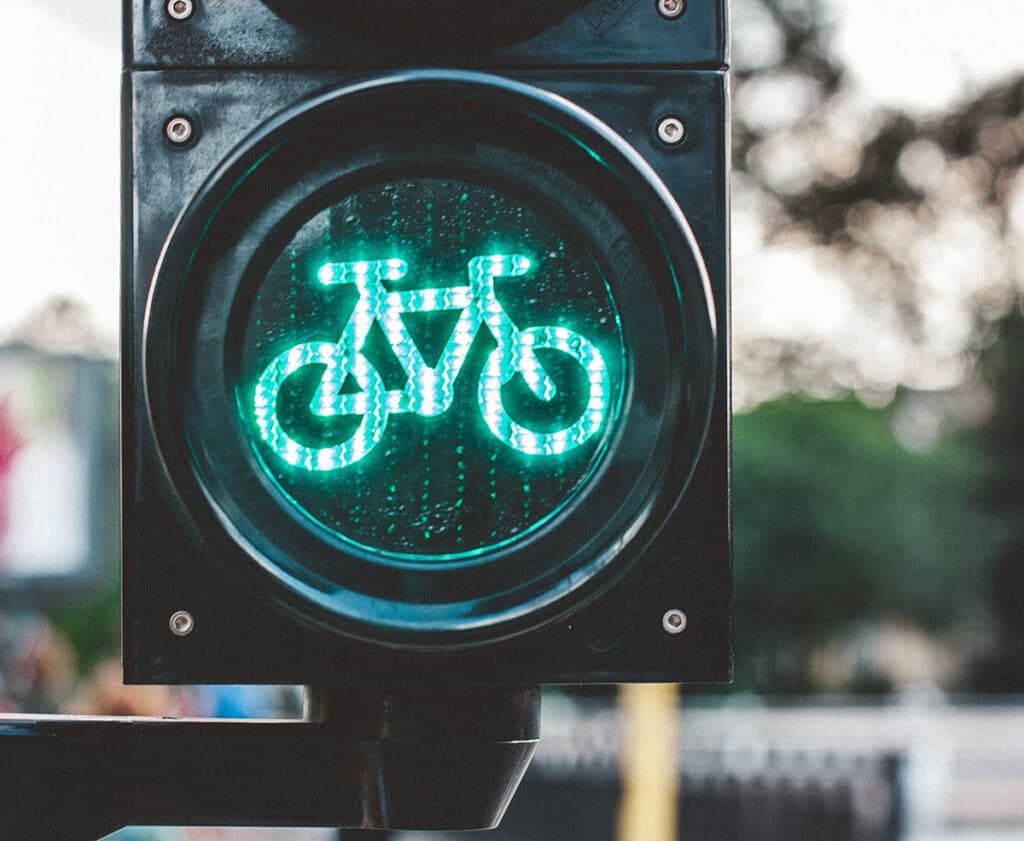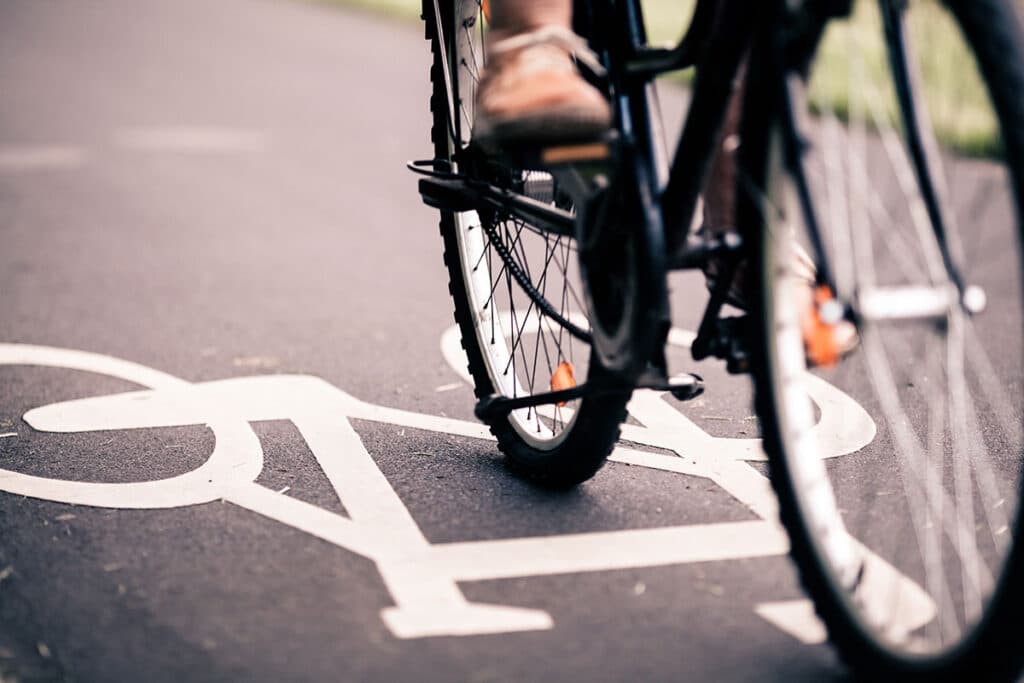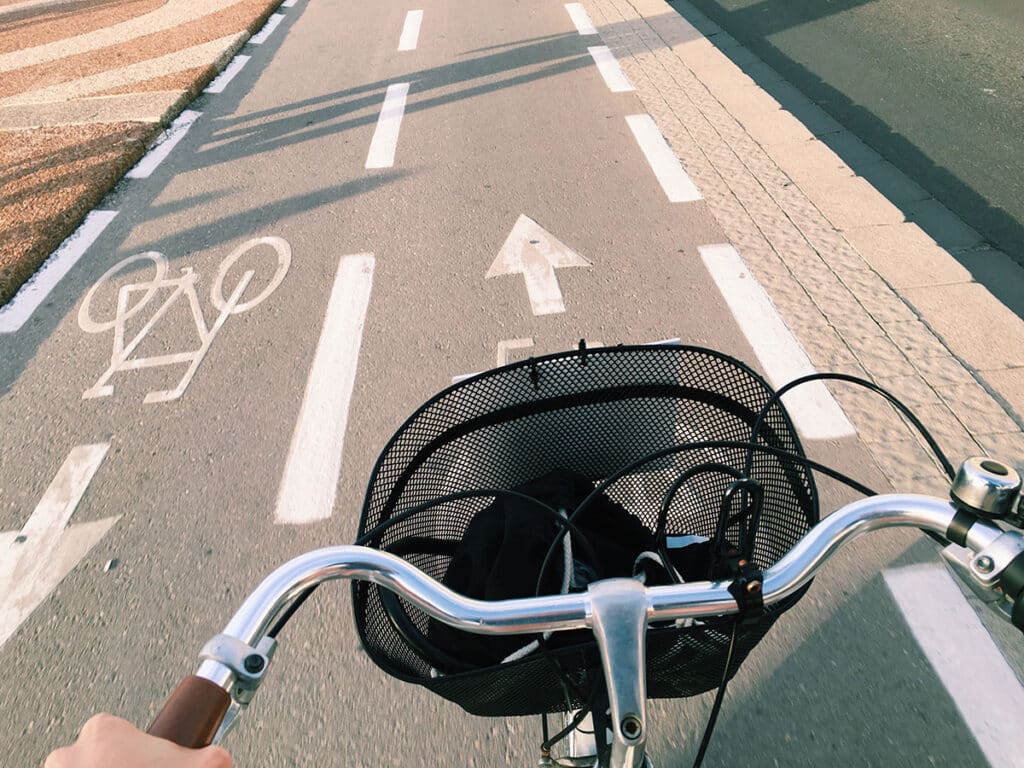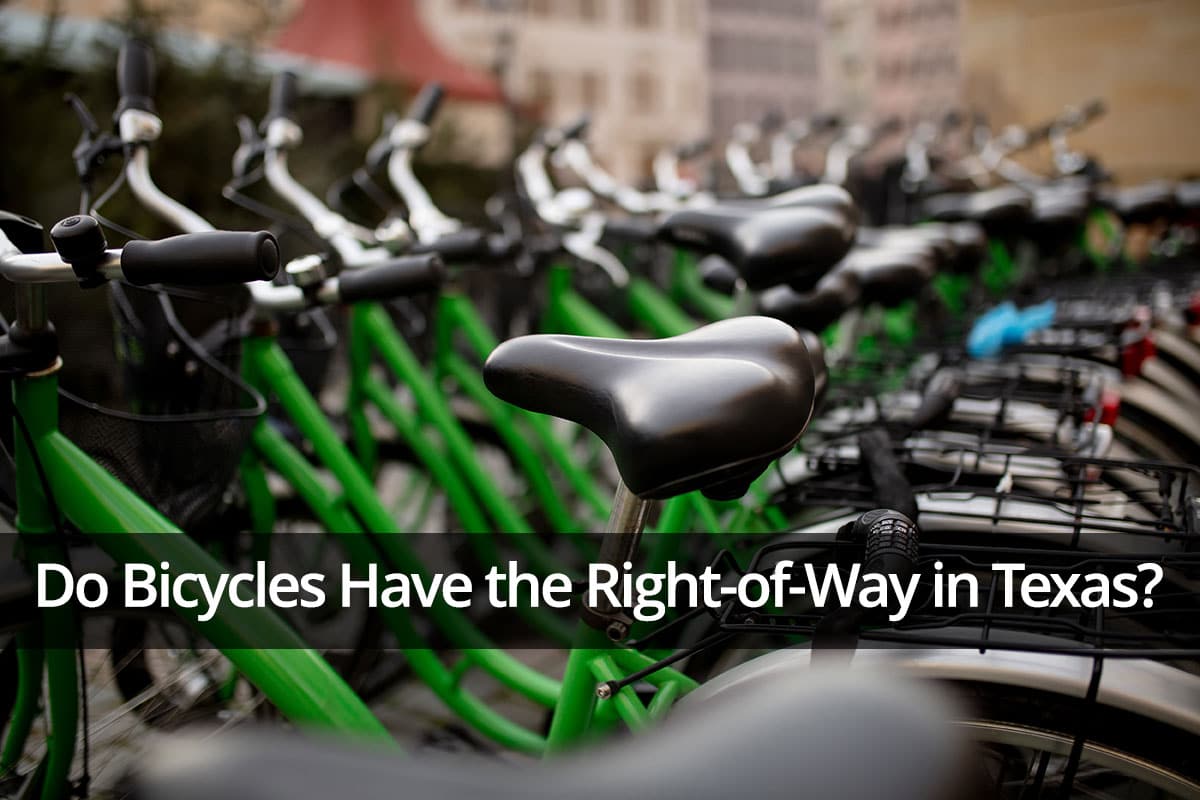Bikes are a popular mode of transportation in Texas, from commuters to recreational riders. Unfortunately, nearly 1000 cyclists die, and thousands of other riders are injured each year from bicycle accidents. This issue can be prevented if cyclists and other vehicle drivers understand bicycle laws.
Among the important yet overlooked laws cyclists should be aware of are the right-of-way laws, who has the right of way on a cycle path and whether or not biking on the sidewalk is illegal.
This guide explores right-of-way laws, cycle paths, sidewalk use, and other important laws cyclists in Texas should know.
Do Bicycles Have the Right-of-Way in Texas?
So, do bicycles have the right-of-way in Texas?
The answer to this question depends on the situation. Ideally, cyclists must obey the same laws as motorists, and this law includes yielding right of way where indicated by signs or traffic signals.
For example, suppose a car turns left, and a cyclist is in their path; the driver should yield the right of way to the cyclist. Additionally, cyclists must watch for pedestrians when navigating sidewalks and crosswalks.
In some cases, cyclists may even be given the right of way over cars. For example, at intersections with dedicated bicycle lanes (marked by a special sign), cars must not enter the bicycle lane and yield the right of way to the cyclist.

Who Has the Right of Way on a Cycle Path?
Cycle paths are designated areas specifically intended for cyclists, and they may have their own set of rules and regulations. But the cyclist must understand and observe any signage posted in the area.
If the paths have no signage, cyclists must follow the same laws as motorists. For instance, cyclists still need to yield to pedestrians and obey traffic signals.
Additionally, for extra safety, cyclists should be aware of their surroundings at all times, as paths may have blind corners or sections that are not well-lit. Therefore, cyclists must use extra caution when entering these areas and pay close attention to surrounding traffic.
What Are the Texas Bicycle Laws?
To ensure safe navigation on the roads, Texas has several laws that apply specifically to cyclists, as follows.
Cyclists Have the Duty to Observe Traffic Rules as Other Vehicle Operators
Cyclists must obey all traffic laws and regulations, including signs, signals, and lane markings.
They are also responsible for properly signaling their turns and not blocking the normal movement of other road users. Nonetheless, cars have to yield paths for cyclists when necessary, just like other vehicles.
Cyclists Must Ride on the Right Side of the Road
The law requires cyclists to be on the right side of the road unless they are overtaking another cyclist or vehicle. Therefore, bicyclists should always ride in traffic and never be against it.
Additionally, cyclists must use appropriate hand signals to indicate their intention to turn or stop.
Cyclists Can Take Lane Where Necessary
Cyclists are advised to cycle near curbs and move in the same direction as the rest of the traffic. However, cyclists are allowed to take the lane when necessary.
For example, if a cyclist is riding faster than the rest of the traffics, the cyclist can take the lane. In the same way, if the cyclist plans to take a left turn, they can occupy the lane to signal their intention.

Is Biking on the Sidewalks Illegal in Texas?
The law requires cyclists to obey crosswalks and not ride recklessly on sidewalks. In some cases, cyclists are even allowed to use the sidewalk if the street is too crowded or busy.
However, cyclists should still obey traffic and yield way for pedestrians when using a sidewalk.
Cyclists can use the crosswalks when walking their bikes. For instance, cyclists can use the crosswalks when crossing two points on the same street side. But when crossing to a different block or avenue, bicyclists must dismount and use the sidewalk instead.
Can Cyclists Go the Wrong Way Down One-Way Streets?
No. The law prohibits cyclists from going the wrong way down one-way streets, just like it does for drivers of motor vehicles.
Furthermore, cyclists must not take shortcuts on roads closed to traffic or enter a highway or expressway with their bicycles.
Are Cyclists Bound by the Highway Code?
Like motorists, cyclists should be aware of and follow the Texas Highway Code. This code contains important information about road safety and etiquette, which all bicyclists must observe.
For instance, cyclists must use appropriate gear such as helmets, gloves, and reflective clothing. They must also use a white front light and rear reflectors at night or in low visibility conditions.
Moreover, the code outlines a single cyclist per bicycle rule, whereby a cyclist should only ride one bike at a time. Other codes include:
Code 545.107: Riders should use hand and arm signals to indicate their intention to turn or stop. For example, a left arm in an L shape indicates a left turn, while the right arm at 90 degrees outwards signals a right turn.
Code 551.103c: cyclists may ride abreast if they don’t interfere with the traffic. This rule means that cyclists may ride side-by-side but should also be mindful of other road users.
Do Cyclists Have to Pull Over?
No, cyclists don’t have to pull over to make way for other vehicles. However, the cyclists may have to move as far right as practicable and pay attention to any surrounding traffic. Furthermore, cyclists should know their right-of-way status on different roads and rules.
For example, in the case of a two-way street, cyclists and motorists are allowed to drive in the same direction. But when it comes to a one-way street, only cyclists and vehicles traveling in the correct direction can use the road.
Do Cyclists Have the Same Responsibilities as Other Drivers?
Yes, cyclists must follow the same laws as other drivers.
In Texas, cyclists should respect traffic signals and signs and be mindful of their right-of-way status. For instance, cyclists must stop to allow pedestrians to cross at a zebra crossing or an intersection with a red light.
Other rules that cyclists must observe include not riding their bikes while under the influence of drugs or alcohol since substance involvement is a leading contributor to cyclist-related accidents. Not using a phone for any purpose while cycling and not breaking speed limits are also among a cyclist’s responsibilities..
Furthermore, cyclists must wear appropriate safety gear, such as helmets, gloves, and knee and elbow pads. And night cycles must use lighting to signal other drivers that they are on the road.
Weight is also a crucial consideration for cyclers. Riders must not attach or carry anything that hinders them from placing their hands at the handlebars.
Each bike must be well-maintained before making it on the road. In addition, the bicycles should have functional brakes that work perfectly when the wheel skid on clean and dry pavements.

Can You Drive in the Bicycle Lane in Texas?
Bicycle lanes are specifically meant for cyclists.
Therefore, cars and motorcycles are not allowed to drive in them. However, certain circumstances may permit vehicles to use bicycle lanes. For instance, a vehicle can only enter an adjacent bicycle lane when turning or yielding way for cyclists.
In the same way, cars and other vehicles are not allowed to park on the bicycle lane. But there may be some exceptions, such as if the car’s width isn’t big enough to obstruct the passage of other vehicles.
What Are Other Safety Rules For Bicycle Riders?
Besides wearing protective gear and switching on lights at night, here are some helpful rules to keep riders safe:
- Be aware of traffic signs and signals, and always check the sign before turning.
- Follow the rules of lane sharing -Cyclists should never ride more than two abreast and should not impede other traffic.
- Be cautious when riding at sunrise due to reduced visibility.
- Be visible to other drivers by wearing reflective clothing, using a light at night, and placing reflectors on the bike’s rear.
- Maintain eye contact with car drivers. Don’t automatically assume that the drivers see you.
- Check for curb cuts and other openings. Curb cuts are dangerous for cyclists as they can make them lose balance.
- Don’t attach your bicycle to other vehicles to catch a ride.
- Don’t use headphones when cycling because you won’t hear traffic or other warning signs.
Final Thoughts
Cyclists in Texas should stay aware of their right-of-way status on different roads and observe the same laws as other drivers. Understanding the various rules and regulations for cyclists allows everyone to share the road safely.
Overall, bicyclists have the right-of-way in Texas as long as they follow all applicable laws and exercise caution when sharing the roads with other vehicles.
This includes yielding to pedestrians at crossings, not driving on sidewalks or bike paths, avoiding one-way streets, and wearing appropriate safety gear. By observing these rules, cyclists can safely share the roads with cars in Texas.
Not only should cyclists obey the law regarding their right-of-way status, but they should also keep themselves safe by taking all reasonable precautions. However, you can always contact a lawyer to sue in negligence cases.
Can you cycle on interstate highways in Texas?
No limitations are currently in place for you to cycle on highways.
Nonetheless, the state transportation commission can prohibit passage under certain circumstances. Such a situation includes funeral processions under the commission’s jurisdiction by a parade.
Is cycling under influence prohibited?
Texas DUI laws apply to motorists and not directly to cyclists. Nonetheless, you can face other consequences if you cycle while intoxicated.
For instance, you may not be charged for DUI but face another charge, like public intoxication.
Contact Stoy Law Group, PLLC
So, do bicycles have the right-of-way in Texas? You should know your legal rights and duties when you cycle in Texas.
Besides safety risks, you’ll be liable for the damages if you are at fault for a crash.
The guide above is a general overview of cycling rules in Texas. Some of the regulations may be different for your municipality. So, always double-check with your local authorities or lawyers for any variations.
If you have been in a biking accident and have further questions or need help, contact our bicycle accident lawyers today.














